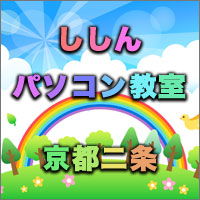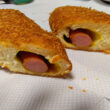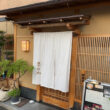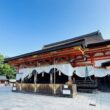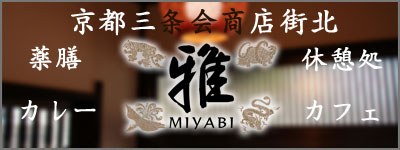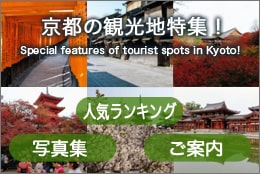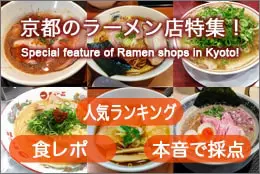Kyoto now and in the past, people coming and going.
Posted date:2025-05-23Author:つばくろ(Tsubakuro) Transrator:ポンタ(Ponta)
Category:Talk about Kyoto
広告
adsense4
I will now introduce the people who, when I was a child, brightened and enlivened our daily lives in Kyoto.
The present-day forms of these people are varied: those who are no longer seen, those who remain in different forms, and those who have not fallen into disuse, but I will look back with nostalgia on the scenes I naturally used to see at that time on the streets of Kyoto.
Older women in Kamo

An older lady going around and selling with a rear-car.
Do you have a memory that you saw an older lady entering your house abruptly without little saying words on the hot summer day?
What she had are large and lustrous eggplants, tomatoes, and cucumbers.
Their attire was traditional, with kosode of navy-blue cotton and a three-width apron.
These people were called “the older ladies of Kamo” or “the older ladies of fields” and one of the traditional summer natural scenes in Kyoto.
The vendor selling Kyoto vegetables from the Kamigamo area in the northern part of Kyoto was called Furi-Uri, and it can be dated back its origin to the far past Heian period.
The columnist also had “the older ladies in Kamo” who visited my house without fail from June and towards the end of July in my childhood.
The older ladies traded with my mother, talking about how well the vegetables were that year, and drinking tea and making worldly talks and then left.
It is said that “the older ladies in Kamo” often visited Nishijin and its surroundings.
For housewives in Nishijin who were doing weaving at home all day and had little time to go outside for shopping, the “older ladies in Kamo” who bothered to visit their home were important existence.

Furiuri using trucks now
Well, the marketing method of Kyoto’s historic Furiuri is still well existed now.
Now 18 farmers continue Furiuri in Kamo.
All of them succeeded agriculture in Kamo for over a century.
As expected, they no longer sell their vegetables by rear-car, but the “old ladies in Kamo” still go around the Nishijin area with their trucks.
Selling Sijimi clams and eels.
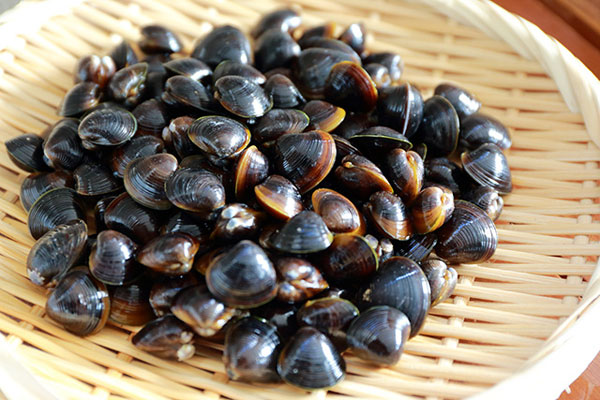
Photo of the shijimi clams
It was the scene we were seeing until around the start of Showa 50s.
I hear that in Seda in Shiga Prefecture at that time, shijimi could be scooped out as much as gravel.
Also, at the same time, Seda is one of the best producing sites of natural eels.
From those respect, we saw routinely people appeared for selling shijimi and eels of Seta in near the towns in Kyoto.
Now, as a result of dramatic decrease in the amount of catch due to water contamination in Lake Biwa got severe, the scene completely became the things of the past.
Tofu sellers riding bicycles in the morning and evening
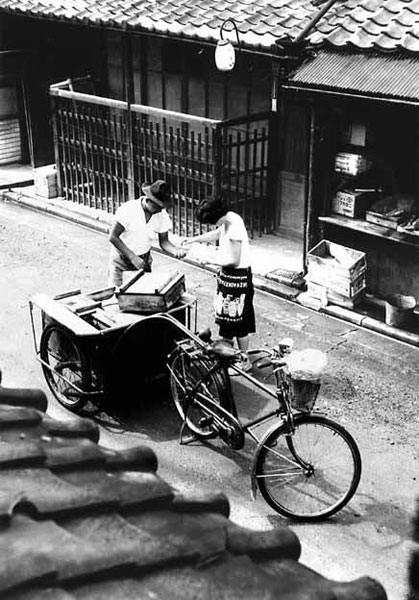
Photo of a tofu seller with a bicycle.
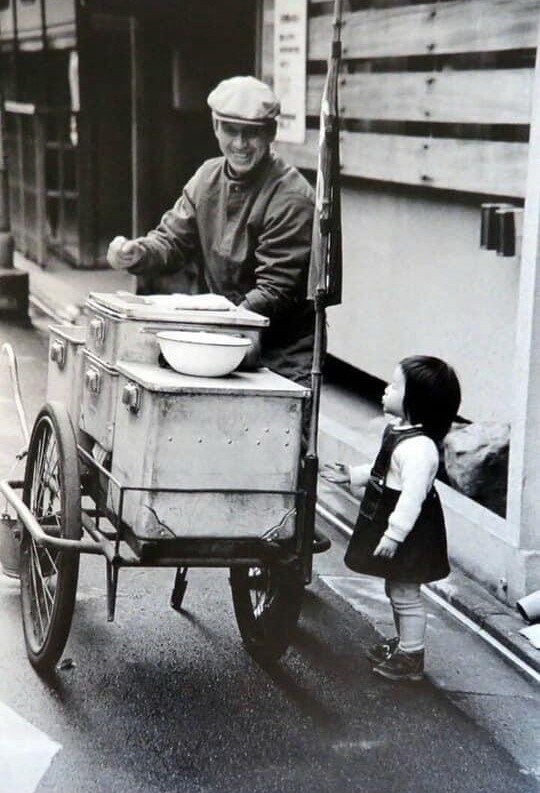
Photo of the sale of one more piece of tofu with a bicycle
Do you sometimes remember the sounds of trumpet the tofu seller made everyday in the morning and evening without fail in your childhood?
Some might remember being asked by their mother and buying tofu from its sellers with bowl or dish in their hands.
It was a nice and tasteful sight to see the tofu sellers coming by bicycles in the morning and evening with their somewhat melancholy trumpet sounding.
The tofu sellers were completely disappeared with the end of Showa period.
The reasons for this are that the clearly cheap prices of tofu in the supermarket that appeared instead of obsolete the marketplaces in the past or there were few customers who were essential for selling even if the sellers went around in the morning and evening as the both working families increased.
Even tofu, an indispensable food for the everyday table, which was peddled from street to street was almost disappeared nowadays.
Donkey Bakery
The “donkey bakery” selling steamed bread with the background music of “Donkey Older man Chin Kriri~n.”
This is also said one of the scenes of moving selling which was familiar in Kyoto.
Not only is this donkey bakery familiar in Kyoto, but it is in fact a pioneer in the mobile bakery business that originated in Kyoto.
Its origin was that the person named Sadayoshi Kuwahara created steamed bread company called Vitamin Chain Store Headquarters, Inc. in Kyoto.
At that time, the cars were drawn by horses not donkeys.
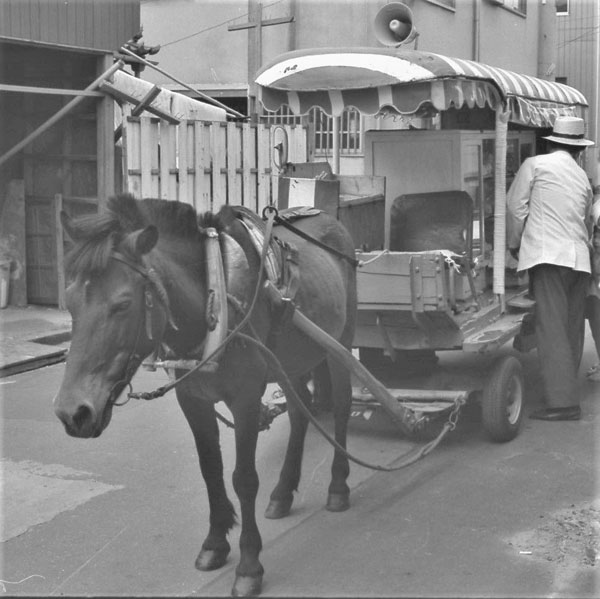
Photo of a horse drawing a car
“Donkey bakery” spread from Kyoto to all the country, loved by children in the midst of a period of rapid economic growth.
At its most prospering period, the number of its shops was 159.
As the road conditions changed with the increase in the number of cars, light vans were replaced horses around Showa 35, but the music of “Donkey Older man Chin Karari~n” was still used as it was popular among the public.

Black and white photo of “donkey bakery” in light van
Gradually following the change in food situations, the number of it gradually decreased as the steamed bread got not to fit people taste.
Now, the survivors of “donkey bakery” are 4 shops in the country.
Unfortunately, it doesn’t operate in Kyoto, the place of its origin.
However, many feel nostalgy of the past, the “donkey bakery” in Gifu and Mie Prefecture doing business trip selling once in a month, and it is positively rated by fans from long ago.
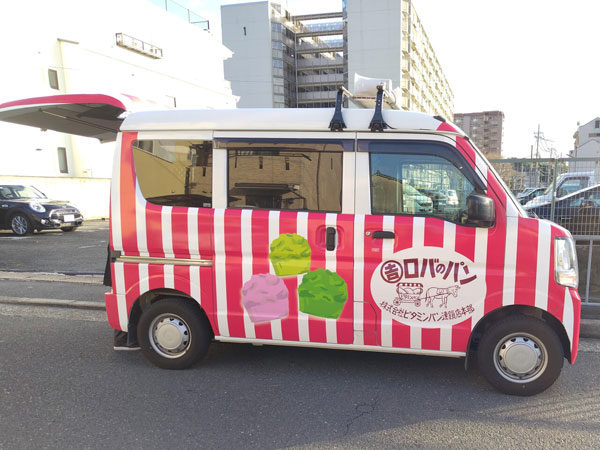
Colored photo of today’s “donkey bakery”
Old-time nostalgic poncakes
Along with “donkey bakery” I introduced earlier, we often saw poncake stalls until around the start of Showa 50s.
This confectionery made with rice placed in a special pressure cooker and heated to a high temperature all at once, is called poncake because of the loud bursting sound when the moisture in the rice (the ingredient) is popped out.
Poncakes were also a standard snack for children from the Taisho to the mid-Showa period.
The merchants for the poncakes went around the region and opened stalls at the place they decided, such as parks or the premises of shrines.
The children and adults who get the poncakes to be made would bring rice, sugar, and a large bag each.
The older man of the stall usually showed us creating poncakes in front of us in exchange of money.
However, as the time passed by, the sales in these stalls became obsolete.
The reasons for this are firstly that there is hygienic problems and the bursting sound that is made when poncakes are produced is dangerous and also that the number of stalls has decreased as the factory production increased.
We mostly see the poncakes nowadays in supermarkets or convenience stores.
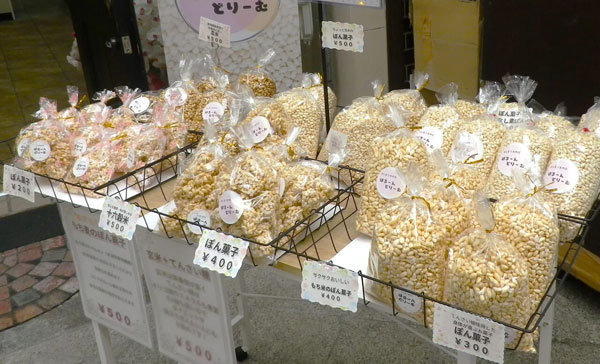
Photo of poncakes being sold in supermarkets
However, there are still a small number of vendors who sell mobile demonstrations in light van.
In Kyoto, I hear there are special vendors like “Masaya” and “poncake maker ATHA”
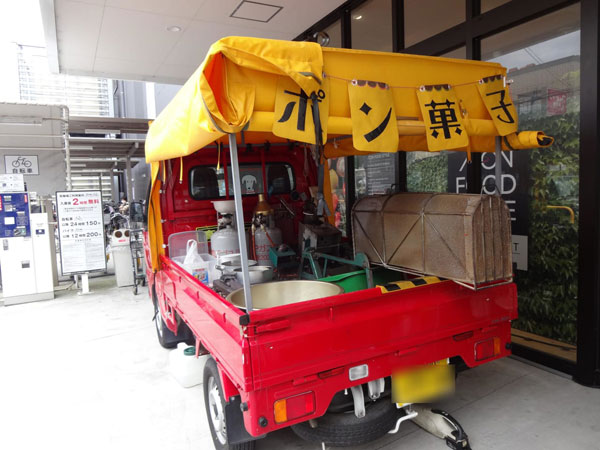
Photo of the light van for poncakes
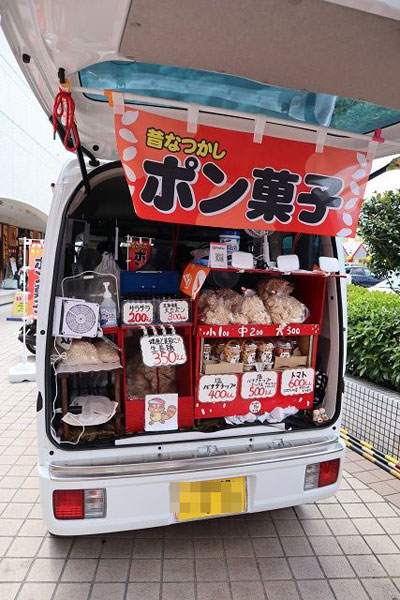
Another photo of the light van for poncakes
Yonaki soba

Photo of the stall for Yonaki soba
When reading Machiko Hasegawa’s four-frame manga “Sazae-san,” Namihei and Masuo stop by a soba and oden stall frequently on their way home from work.
There are many scenes where they slurp ramen and have a drink.
It may be no exaggeration to say that the sound of chalumela echoing in the night is one of the original landscapes that symbolize the peaceful life of the postwar Showa period.
Unfortunately, I, the columnist, have never had it, but one of my friends was a rooted fan of Yonaki soba.
The friend said that when he heard the sound of the chalumera, he could not sit still and rushed to the stall with a bowl in his hand.
We don’t see the Yonaki soba stalls recently.
The reasons for this are the spread of convenience stores and other 24-hour outlets, the fact that they are now ridiculed from a hygienic standpoint, and the increase in the number of households that keep cup of instant noodles on hand.
The number of Yonaki soba stalls in the Kansai region, which numbered 200 around in 1966 ~ 1975, has declined dramatically, and there are now only 10.
There are fans of yesteryear who are concerned about this, but it seems to be a situation that is beyond their control.
The conclusion
As such, a variety of people came and went in and out of the neighborhood of the city, and we in Kyoto have lived while witnessing them, but as time passed by, the way of being a peddler also changed.
Nevertheless, merchants who have gone through hundreds of years of historical changes, such as the “old ladies of Kamo”, still remain strictly in place, even if their costumes have changed somewhat.
Also, although I did not cover them in detail here because they are not peddlers, one of the people who can still be seen in the neighborhoods of Kyoto today and in the past are the mendicants, the mendicant cloud water.
I think there were many Kyoto people as a child, who experienced as much fear as they would die encountering the Unsui who stopped at the eaves of houses while chanting sutras and begging for offerings.
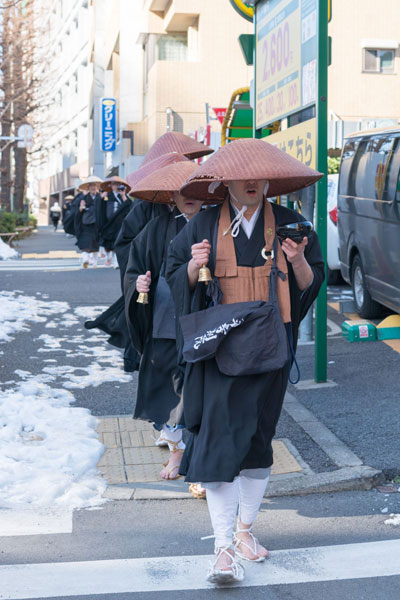
Photo of Unsui
It is also sometimes good to think about the people who have come and gone throughout Kyoto’s long and unbroken history, as well as the people who once walked the streets and then disappeared, as if symbolizing a certain era.
Author
つばくろ(Tsubakuro)
I was born and raised in Kyoto and am a native Kyotoite.
When I was young, I longed to visit Tokyo and Osaka, which are more bustling than Kyoto, but as I have gotten older, I have come to appreciate Kyoto a little more.
In this site, I will introduce you to some of the best places to explore Kyoto's food that you might otherwise miss at first glance.
